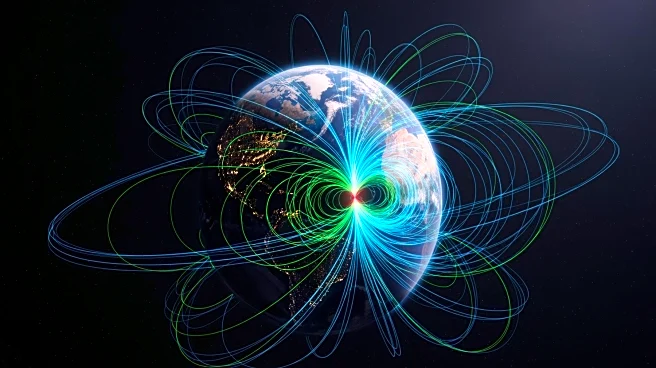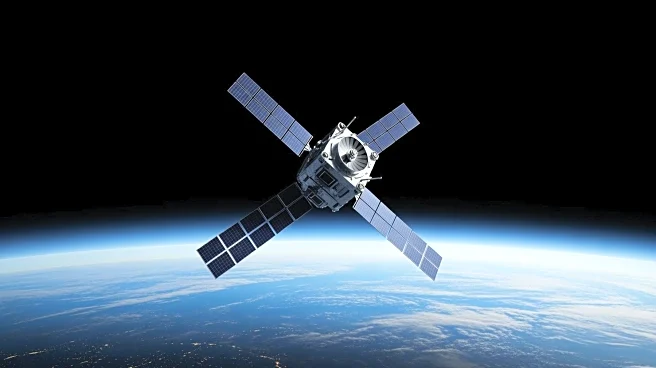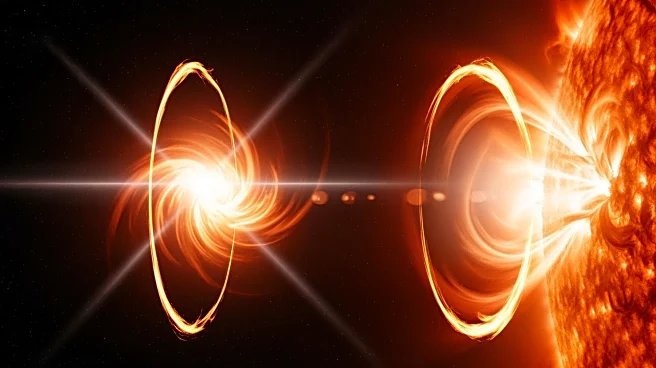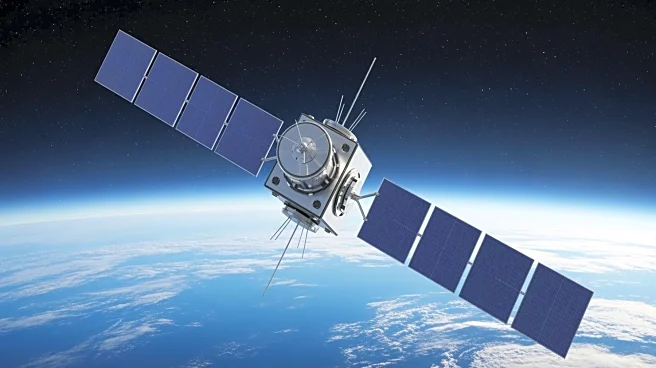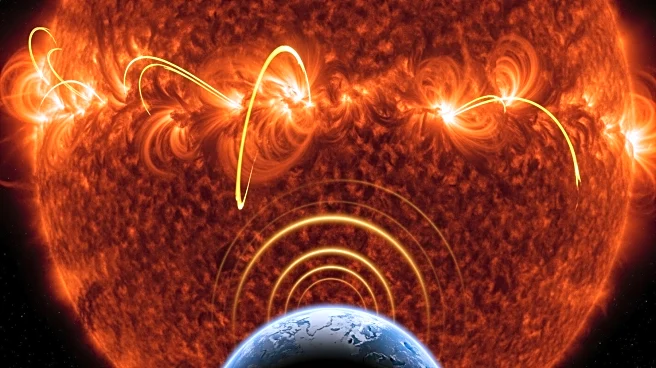What's Happening?
NASA is tracking the South Atlantic Anomaly (SAA), a vast region of lower magnetic intensity stretching between South America and southwest Africa. This anomaly poses risks to satellites and spacecraft,
which can malfunction when passing through the weakened magnetic field. The SAA has expanded significantly since 2014, and its magnetic intensity continues to weaken. NASA's ongoing research aims to understand the anomaly's behavior and implications for space technology.
Why It's Important?
The South Atlantic Anomaly represents a significant challenge for space missions, as it can cause technological systems onboard satellites to short-circuit and malfunction. Understanding the anomaly is crucial for developing strategies to mitigate these risks and ensure the safety of space operations. Additionally, studying the SAA provides insights into Earth's magnetic field dynamics and the underlying geological processes affecting its strength and distribution.
What's Next?
NASA will continue to monitor the SAA, using its resources to study the anomaly's morphology and predict its future behavior. Researchers are exploring the possibility of the anomaly splitting into distinct cells, which could have further implications for space technology. Continued observation and modeling will help refine predictions and inform strategies for managing the risks associated with the anomaly.
